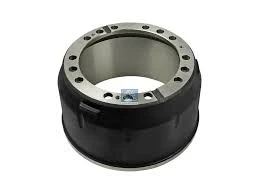Understanding the Design and Functionality of Drum Brake Systems in Automotive Applications
The Construction of Drum Brake An In-Depth Overview
Drum brakes are a critical component of many vehicles, especially in older models and light to medium-duty applications. Understanding the construction and functioning of drum brakes is essential for anyone interested in automotive engineering or simply looking to enhance their knowledge of vehicle mechanics.
Basic Components of Drum Brake
At the core of a drum brake system are several key components the brake drum, brake shoes, wheel cylinder, return springs, and the parking brake mechanism.
1. Brake Drum The brake drum is a hollow, cylindrical part that is usually made of cast iron or aluminum. It rotates with the wheel, providing a surface for the brake shoes to create friction when the brakes are applied. The interior surface of the drum is finely machined to ensure an even contact with the brake shoes.
2. Brake Shoes These are curved metal plates that press against the inner surface of the drum. The surface of the brake shoes is lined with a friction material, which can vary in composition depending on the application and performance requirements. When the brakes are activated, the shoes expand outward against the drum, creating the necessary friction to slow down or stop the vehicle.
3. Wheel Cylinder This component is located at the top of the brake assembly and contains piston(s) that are actuated by brake fluid. When the driver presses the brake pedal, hydraulic pressure forces the pistons outward, pushing the brake shoes against the drum. This hydraulic system is integral to the effective performance of drum brakes.
4. Return Springs Return springs are responsible for retracting the brake shoes back to their original positions once the brake pedal is released. This prevents the shoes from dragging against the drum, which could lead to unnecessary wear and decreased fuel efficiency.
construction of drum brake

5. Parking Brake Many drum brake systems incorporate a mechanism for a parking brake, which typically involves a lever or pedal that, when engaged, pulls the brake shoes into contact with the drum. This feature is especially important for securing the vehicle when parked on an incline.
How Drum Brakes Work
The operation of drum brakes is primarily hydraulic. When the brake pedal is pressed, brake fluid is forced from the master cylinder into the wheel cylinder. This fluid movement activates the pistons within the wheel cylinder, pushing them outward. The outward motion of the pistons forces the brake shoes against the inner surface of the drum.
As friction is generated between the shoes and drum, it produces the necessary braking force to decelerate the vehicle. Once the brake pedal is released, the hydraulic pressure decreases, allowing the return springs to pull the brake shoes away from the drum, thereby reducing drag and allowing the wheels to rotate freely.
Advantages and Disadvantages
Drum brakes offer several advantages, such as cost-effectiveness and the ability to generate significant braking force. They are generally more effective in environments requiring gradual braking. However, they do have some disadvantages, including susceptibility to overheating and brake fade in high-performance situations. Furthermore, drum brakes are typically more challenging to service and replace than disc brakes, which have led to a decline in their usage in modern vehicles.
Conclusion
In conclusion, the construction of drum brakes involves a well-integrated system of components that work together to provide reliable braking performance. Understanding the mechanics behind drum brakes not only offers insight into their functionality but also emphasizes the importance of regular maintenance and safety checks. While technology has evolved and many vehicles now utilize disc brakes, drum brakes remain a relevant topic for those interested in the fundamentals of vehicle braking systems.
-
The Power and Reliability of Brake DrumsNotiziaAug.27,2025
-
The High-Quality Truck Brake DrumsNotiziaAug.27,2025
-
Quality Brake Drums for Reliable PerformanceNotiziaAug.27,2025
-
Get the Quality Semi Trailer Brake Drums for Your FleetNotiziaAug.27,2025
-
Everything You Need to Know About Brake DrumsNotiziaAug.27,2025
-
Enhance Your Vehicle's Performance with Reliable Brake DrumsNotiziaAug.27,2025
-
Truck Drum Brake Spring Replacement ProcedureNotiziaAug.22,2025


